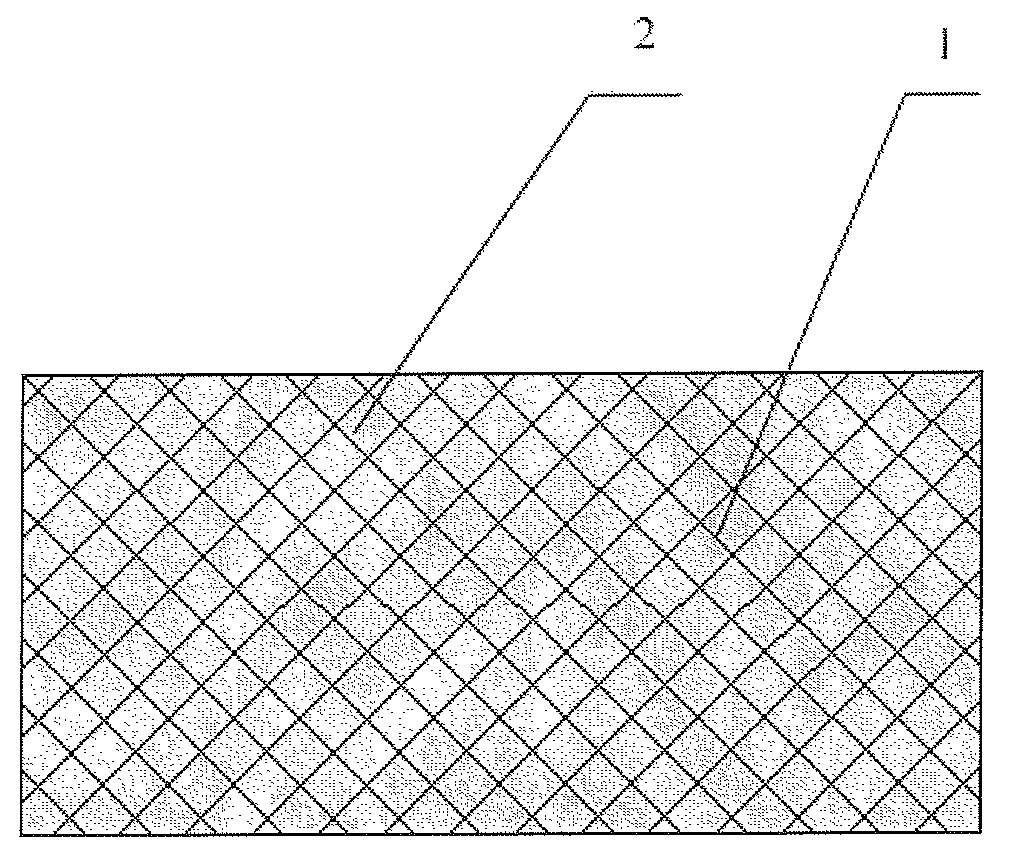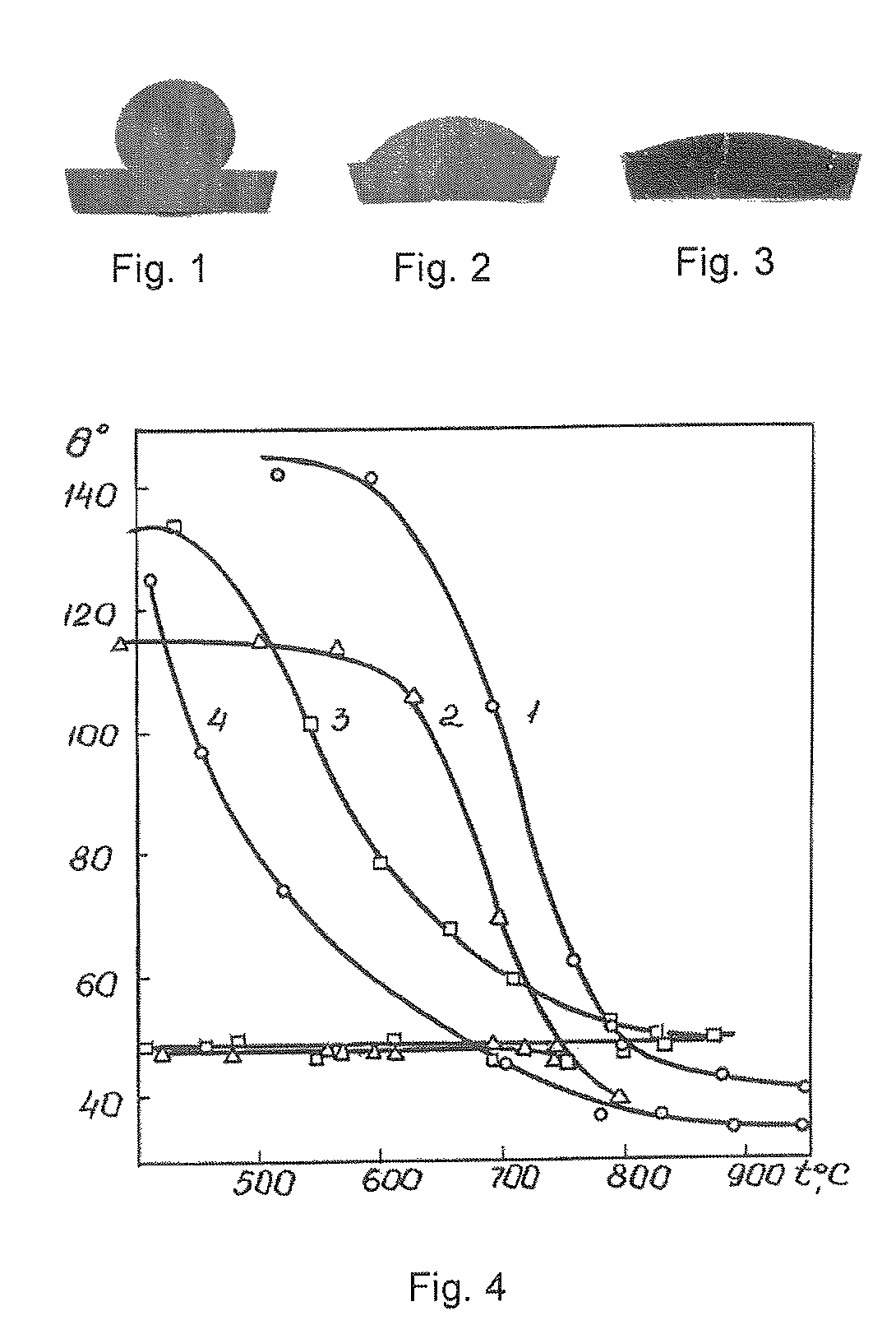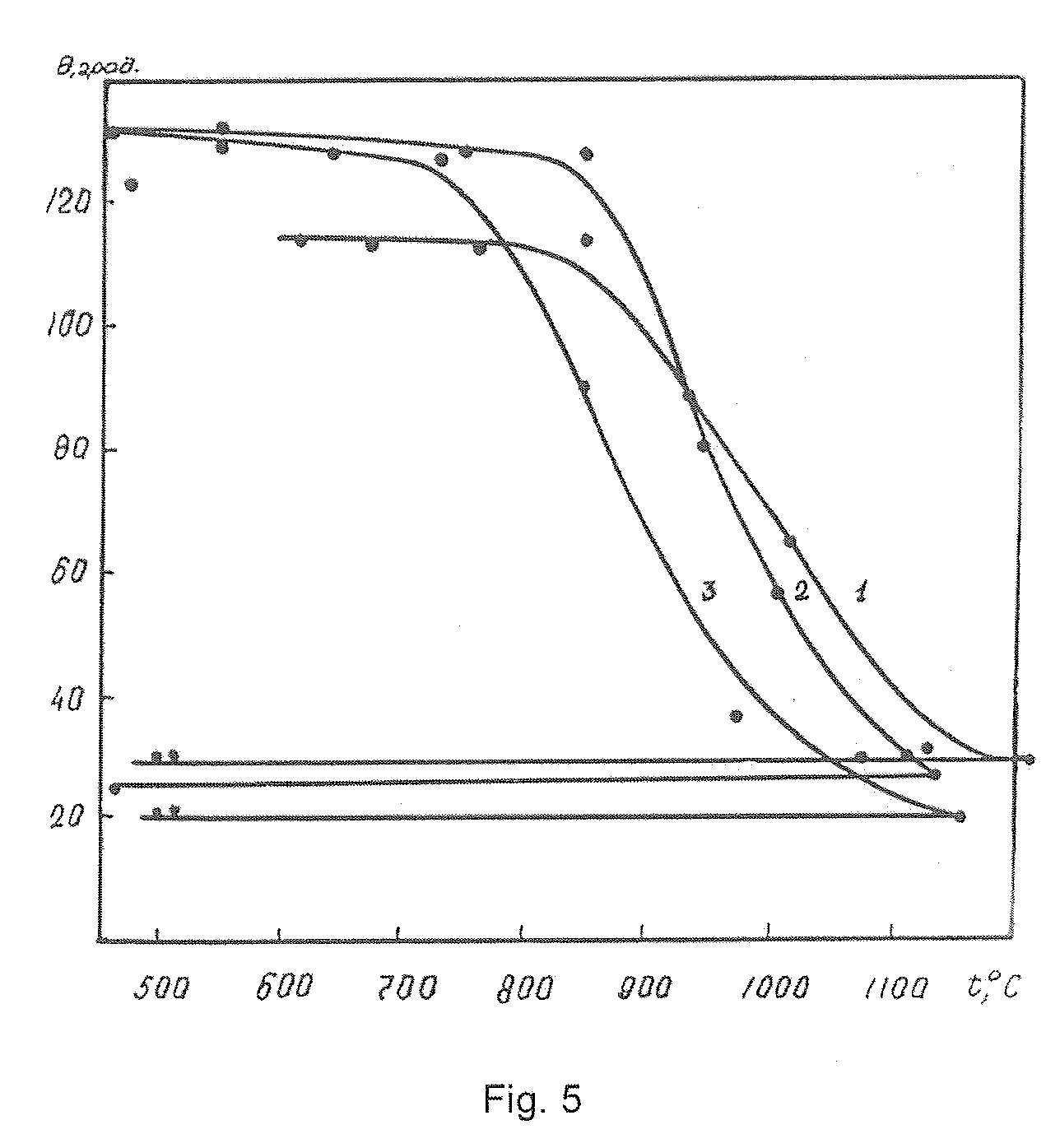Method for the manufacture of liquid-metal composite contact
- Summary
- Abstract
- Description
- Claims
- Application Information
AI Technical Summary
Benefits of technology
Problems solved by technology
Method used
Image
Examples
example 1
[0029]Liquid-metal composite contact was manufactured. Namely, tungsten wire was used to produce the fabric in the form of a strip having the arranged structure. The strip was rolled to form cylindrical workpiece, which was installed into a matrix. Then the workpiece was pressed to obtain the structure 1 of the necessary dimensions. The structure 1 was reduced in the hydride hydrogen environment produced in a vacuum furnace. The structure 1 made of high-melting metal wire was soaked with three low-melting metals 2, i.e. tin (Sn), indium (In) and gallium (Ga) in the hydride hydrogen environment within three sequential stages lasting 10 to 20 minutes each, namely, at the first stage the structure was soaked with liquid tin (Sn) at the temperature of 950° C., at the second stage the structure was soaked with liquid indium (In) at the temperature of 900° C., and at the third stage the structure was soaked with liquid gallium (Ga) at the temperature of 750 to 800° C., and the amount of l...
example 2
[0030]Liquid-metal composite contact was manufactured. Namely, molybdenum wire was used to produce the fabric in the form of a strip having the arranged structure. The strip was rolled to form cylindrical workpiece, which was installed into a matrix. Then the workpiece was pressed to obtain the structure 1 of the necessary dimensions. The structure 1 was reduced in the hydride hydrogen environment produced in a vacuum furnace. The structure 1 made of high-melting metal was soaked with three low-melting metals 2, i.e. tin (Sn), indium (In) and gallium (Ga) in the hydride hydrogen environment within three sequential stages lasting 10 to 20 minutes each, namely, at the first stage the structure was soaked with liquid tin (Sn) at the temperature of 1100° C., at the second stage the structure was soaked with liquid indium (In) at the temperature of 850 to 1000° C., and at the third stage the structure was soaked with liquid gallium (Ga) at the temperature of 800° C., and the amount of li...
example 3
[0031]Liquid-metal composite contact was manufactured. Namely, rhenium wire was used to produce the fabric in the form of a strip having the arranged structure. The strip was rolled to form cylindrical workpiece, which was installed into a matrix. Then the workpiece was pressed to obtain the structure 1 of the necessary dimensions. The structure 1 was reduced in the hydride hydrogen environment produced in a vacuum furnace. The porous structure 1 was soaked with three low-melting metals 2, i.e. tin (Sn), indium (In) and gallium (Ga) in the hydride hydrogen environment within three sequential stages lasting 10 to 20 minutes each, namely, at the first stage the structure was soaked with liquid tin (Sn) at the temperature of 1050° C., at the second stage the structure was soaked with liquid indium (In) at the temperature of 950° C., and at the third stage the structure was soaked with liquid gallium (Ga) at the temperature of 900° C., and the amount of liquid tin (Sn), indium (In) and ...
PUM
| Property | Measurement | Unit |
|---|---|---|
| Temperature | aaaaa | aaaaa |
| Temperature | aaaaa | aaaaa |
| Temperature | aaaaa | aaaaa |
Abstract
Description
Claims
Application Information
 Login to View More
Login to View More - R&D
- Intellectual Property
- Life Sciences
- Materials
- Tech Scout
- Unparalleled Data Quality
- Higher Quality Content
- 60% Fewer Hallucinations
Browse by: Latest US Patents, China's latest patents, Technical Efficacy Thesaurus, Application Domain, Technology Topic, Popular Technical Reports.
© 2025 PatSnap. All rights reserved.Legal|Privacy policy|Modern Slavery Act Transparency Statement|Sitemap|About US| Contact US: help@patsnap.com



